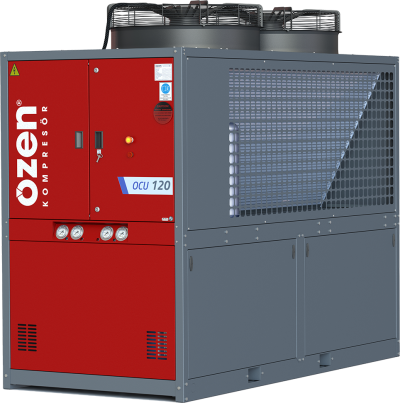Industrial Cooling Systems

Model
OCU Chiller Series

Efficient Chiller Solutions Tailored to Your Industrial Cooling Needs
The Özen Kompresör OCU Chiller series is designed for industries that require continuous cooling and efficient operation. Thanks to its proven performance in maintaining stable cooling, the OCU Chiller series is preferred by many industries seeking high-quality production — from plastics to paint, cosmetics to food.
Industrial chillers regulate equipment temperature to save production time, enhance product quality, and prevent unexpected breakdowns. In this way, they protect production systems from heat damage that may occur during specific industrial applications.
Adaptable to the requirements of different environments, the OCU Chiller series offers two options: air-cooled and water-cooled. Air-cooled chillers can be used as a single unit or configured in multiple sections, making them popular among chilled water system designers. They range from small-capacity models to units of several hundred tons used to cool large commercial buildings.
Unlike air-cooled chillers, water-cooled chillers use water to cool the hot refrigerant in the condenser circuit. In most cases, a cooling tower is employed to meet this water demand.

